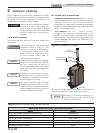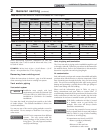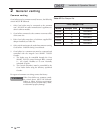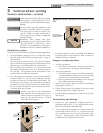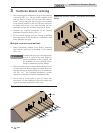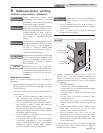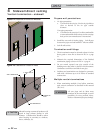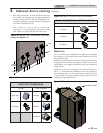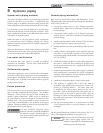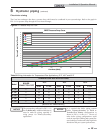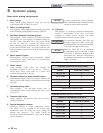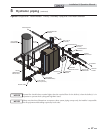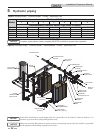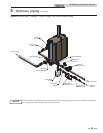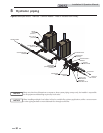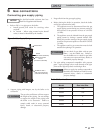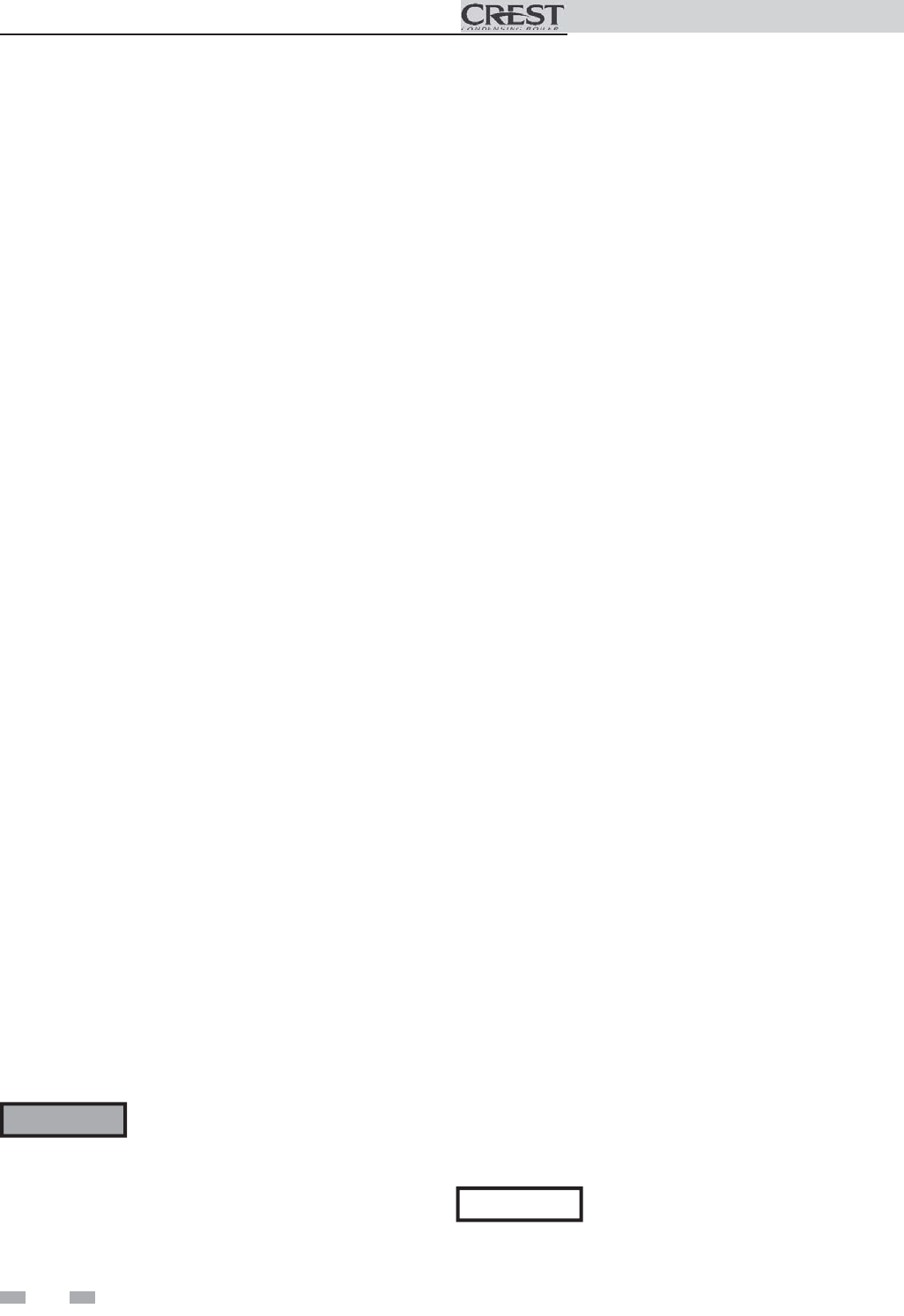
24
Installation & Operation Manual
5 Hydronic piping
System water piping methods
The Crest is designed to function in a closed loop pressurized
system not less than 12 psi (83 kPa). A temperature and
pressure gauge is included to monitor system pressure and
outlet temperature and should be located on the boiler outlet.
It is important to note that the boiler has a pressure drop
which must be figured in when sizing the circulators. Each
boiler installation must have an air elimination device, which
will remove air from the system.
Install the boiler so the gas ignition system components
are protected from water (dripping, spraying, etc.) during
appliance operation or basic service of circulator replacement,
valves, and others.
Observe a minimum of 1/4 inch (6 mm) clearance around all
uninsulated hot water pipes when openings around the pipes
are not protected by non-combustible materials.
Low water cutoff device
An electronic low water cutoff is provided as standard
equipment on all models. The low water cutoff should be
inspected every 6 months.
Chilled water system
If the boiler supplies hot water to heating coils in air handler
units, flow control valves or other devices must be installed to
prevent gravity circulation of heater water in the coils during
the cooling cycle. A chilled water medium must be piped in
parallel with the heater.
Freeze protection
Freeze protection for new or existing systems must use glycol
that is specially formulated for this purpose. This includes
inhibitors, which prevent the glycol from attacking the
metallic system components. Make certain to check that
the system fluid is correct for the glycol concentration and
inhibitor level. The system should be tested at least once
a year and as recommended by the producer of the glycol
solution. Allowance should be made for the expansion of the
glycol solution in the system piping.
General piping information
Basic steps are listed below along with illustrations on the
following pages, which will guide you through the installation
of the Crest (5-2 thru 5-5).
1. Connect the system return to the 4" flanged connection
marked “Inlet”, make sure to install with a suitable gasket
between flanges.
2. Connect the system supply to the 4" flanged connection
marked “Outlet”, make sure to install with a suitable gasket
between flanges.
3. Install purge and balance valve or shutoff valve and drain
on system return to purge air out of each zone.
4. Install a backflow preventer on the cold feed make-up water
line.
5. Install a pressure reducing valve on the cold feed make-up
water line, (15 psi (103 kPa) nominal). Check temperature
and pressure gauge, which should read a minimum pressure
of 12 psi (83 kPa).
6. Install the circulators as shown on the piping diagrams in
this section. Make sure the circulators are properly sized
for the system and friction loss. Install check valves with
each boiler circulator.
7. Install an expansion tank on the system supply. Consult the
tank manufacturer’s instruction for specific information
relating to tank installation. Size the expansion tank for the
required system volume and capacity.
8. Install an air elimination device on the system supply.
9. This appliance is supplied with a relief valve sized in
accordance with ASME Boiler and Pressure Vessel Code,
Section IV (“Heating Boilers”). The safety relief valve
is installed at the factory and is located on the rear of
the boiler. Pipe the discharge of the safety relief valve to
prevent injury in the event of pressure relief. Pipe the
discharge to a drain. Provide piping that is the same size as
the safety relief valve outlet. Never block the outlet of the
safety relief valve.
10. On any pre-existing system, it is good practice to install
a field supplied strainer to prevent damage to the heat
exchanger.
See the piping illustrations included in this section, FIG.’s 5-2
thru 5-5 for suggested guidelines in piping the Crest.
Please note that these illustrations are meant
to show system piping concept only, the
installer is responsible for all equipment and
detailing required by local codes.
Use only inhibited propylene glycol
solutions, which are specifically formulated
for hydronic systems. Ethylene glycol is
toxic and can attack gaskets and seals used
in hydronic systems.
ƽ WARNING
NOTICE



